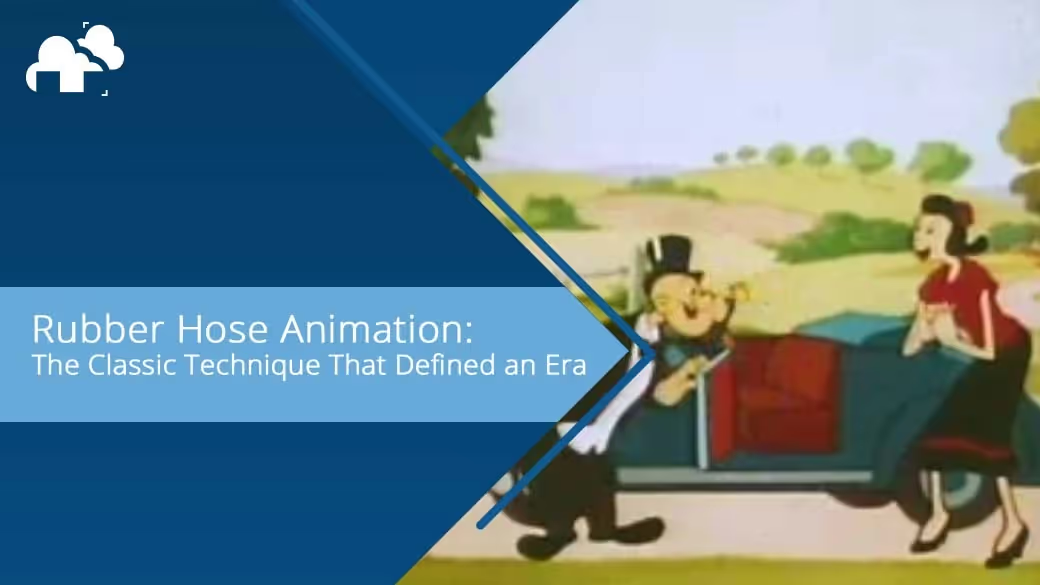
Rubber hose animation, a pioneering technique in the world of animation, defined an era of animated storytelling that continues to influence modern media. This distinctive style, characterized by its exaggerated and fluid movement, gave life to some of the most iconic characters and memorable animations of the early 20th century. From the whimsical adventures of Mickey Mouse to the innovative designs of Fleischer Studios, rubber hose animation remains a beloved art form that shaped the animation industry.
Rubber hose animation refers to an animation style where characters’ limbs resemble flexible, hose-like tubes. This technique emerged during the early days of traditional animation, around the 1920s, and became a hallmark of the era's cartoons. The term "rubber hose" aptly describes the way characters' arms and legs move with a fluid, exaggerated flexibility, lacking the defined joints and bones typical of more realistic animation styles.
Rubber hose animation has its roots in the early developments of animation in the United States. It evolved from the need for simpler and more efficient methods to animate characters. Early animators, faced with the challenge of bringing drawings to life, found that using fluid, flexible movements made the animation process easier and faster.
The rubber hose animation style began to take shape in the 1920s. Pioneers like Walt Disney and Ub Iwerks were at the forefront of this innovation, with characters such as Oswald the Lucky Rabbit and Mickey Mouse showcasing the distinctive style. This period marked the beginning of an animation revolution, where the focus was on creating visually engaging and humorous characters that could move fluidly and expressively.
The dominance of rubber hose animation started to wane in the late 1930s and early 1940s. As animation techniques advanced, there was a shift towards more realistic and anatomically accurate character designs. Studios like Disney began to adopt a style that included more detailed joint articulation and a better understanding of anatomy, leading to the decline of the rubber hose style.
Rubber hose animation is defined by several key characteristics:
The rubber hose drawing technique involves creating characters with continuous, smooth lines that emphasize flexibility and movement. Artists would draw characters with round, flowing shapes, avoiding angular or rigid forms. This technique allowed for easy and quick animation, as the characters could bend and stretch in any direction, creating a dynamic and lively effect.
Several iconic characters emerged from the rubber hose animation era:
Rubber hose animation was featured in numerous popular shows and cartoons, including:
While rubber hose animation is not as prevalent today, its influence can still be seen in various modern media. Some contemporary works pay homage to this classic style, incorporating its distinctive elements to evoke nostalgia or create a unique visual aesthetic.
How to Create 3D Animation in the Rubber Hose Style
Creating 3D animation in the rubber hose style involves blending modern techniques with the classic characteristics of rubber hose animation. Here are some steps to achieve this look:
Bendy bones in 3D animation, as shown in Blender, are a key technique for achieving smooth and flexible deformations, making them ideal for organic movements like character limbs and tails. By subdividing a bone into multiple segments, animators can create fluid bending and twisting along the bone's length, perfect for the rubber hose animation style often seen in early cartoons. This technique allows for exaggerated, whimsical motion.
Bendy bones provide enhanced control through parameters like Ease In/Out, Roll, and Curve Influence, making them suitable for both realistic and stylized animations. When utilizing a render farm, animators can efficiently process these complex animations, ensuring high-quality output while maintaining the smooth, fluid characteristics of rubber hose animation. Render farms are particularly beneficial in professional settings, where rendering speed and quality are critical for production.: See Southern Shotty's Tutorial below:
Several video games have adopted the rubber hose animation style to evoke a sense of nostalgia and whimsy:
Hand-drawn animation, while less common in mainstream productions, is still used today by various studios and independent animators. The tactile, organic quality of hand-drawn animation remains appealing, and it continues to be employed for its artistic value and unique aesthetic.
Modern animation techniques have advanced significantly since the days of rubber hose animation. Today's animations often feature:
Despite these advancements, rubber hose animation's simplicity and charm still hold a special place in the hearts of many.
The influence of rubber hose animation extends beyond its era, impacting various forms of modern media:
The future of animation is likely to see a continued blend of traditional and modern techniques. Advances in technology will enable animators to create more realistic and detailed animations, while the timeless appeal of styles like rubber hose animation will ensure their enduring presence in the world of animation.
For those interested in learning more about rubber hose animation, numerous resources and tutorials are available:
Rubber hose animation, with its fluid movements and charming simplicity, remains a beloved technique that defined an era. Its influence continues to be felt in modern media, proving that the classic methods of the past can still captivate audiences today.